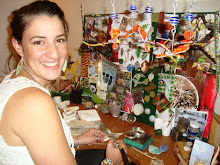-Materials
I mainly use silver for manufacture, other materials I may sometimes include in my work are enamels and ceramics.
A. Silver
There are two ways in which
to source silver, Through either Primary or secondary refining.
-
Primary refining
This
process is whereby first time silver is extracted from the earth (this can be environmentally
devastating).
-
Secondary
refining
The silver is sourced from an already existing product (recycling, or re-melting old silver jewellery).This process uses less resources, chemicals, and energy. One-fifth of silver
mined each year, worldwide, goes into X-ray film. Craig (2009 : Pg36).
I am currently buying my
silver from a secondary refiner (Virgo Metals Durban- 031 207 4290). This silver has been
extracted from old X-rays.
B. Enamel
Enamelling is a technique that was used by most of the ancient civilizations and was continued to be used throughout history and still today. Enamel is basically ground glass. It is made from an extremely friable type of glass called frit. It is coloured using various minerals or metal oxides.- I don't see any sustainable related issues to enamel itself. Although different firing methods can be more or less sustainable (that will be touched on in my techniques section).
C.Ceramics
There are many different types of clay. I will have to find out from my supplier (Kamel Kilns) a bit more about the clay's and their origins before i can comment or judge. Clay can also be primarily or secondarily sourced.
-Primary clay is found at the source where it formed. In some cases areas are deforested in order for its extraction :(.
-Secondary clay is where deposits have been moved from the original location by erosion or water.
(Different firing methods will be looked at in the techniques section as well).

No comments:
Post a Comment